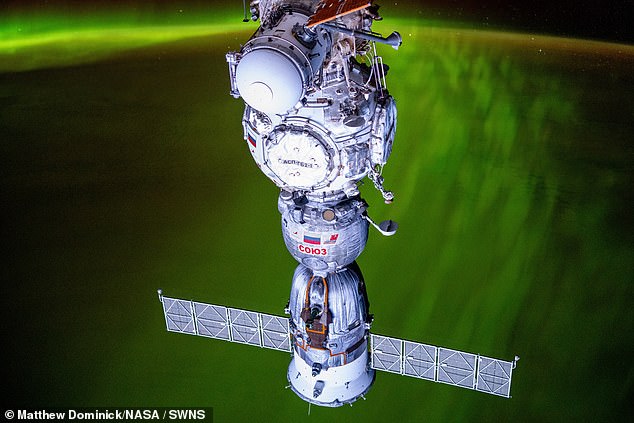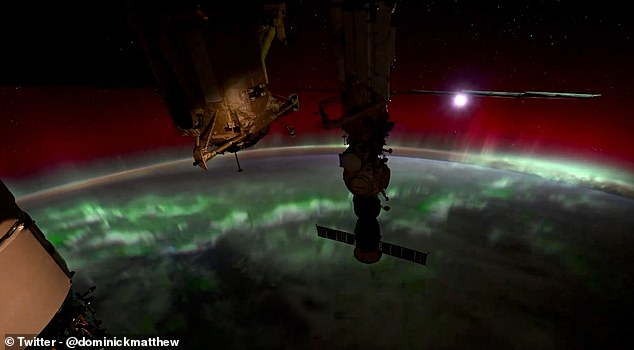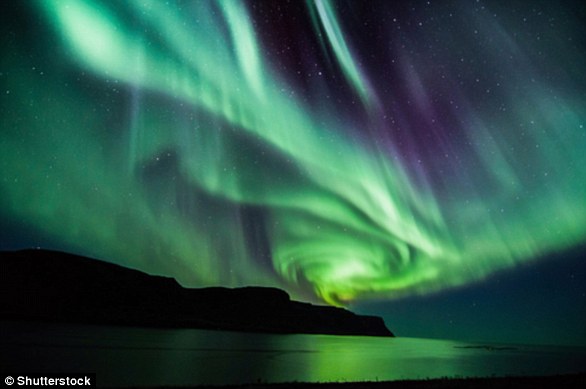See the Northern Lights from SPACE: NASA astronaut on board the ISS films a stunning video of the astronomical light display
- Mr. Dominick has been aboard the ISS since March 3, 2024
- He tweeted a stunning bird’s eye view of the Northern Lights
Seeing the Northern Lights is high on many people’s wish lists.
Now, one lucky astronaut has gotten an even better view of them from Earth. Instead, he has posted an incredible video of the aurora borealis from space.
Matthew DominickA NASA astronaut currently aboard the International Space Station (ISS) tweeted his bird’s-eye view of the Northern Lights.
The stunning images attracted a lot of attention and fans were awed by the unique view of the Northern Lights.
Even NASA was impressed. The NASA Earth X account responded, “These videos never get old.”
Seeing the Northern Lights is on many people’s bucket lists. Now one lucky astronaut has outdone seeing them from Earth and posted an incredible video of the aurora borealis from space instead
Mr. Dominick was deployed to the ISS on March 3, 2024, as commander of NASA’s SpaceX Crew-8 mission.
He works as a flight engineer aboard the space lab and is expected to spend about six months on the ISS. However, his return to Earth may be delayed due to the problems with the Boeing Starliner.
Although he spends most of his time on the ISS conducting scientific experiments, Mr. Dominick also frequently takes photographs and films footage from his unique vantage point.
“Timelapse of the moon setting in streams of red and green aurora, followed by a sunrise illuminating the Soyuz with a pale blue light,” he wrote in the caption of his latest video.
‘The northern lights have been beautiful the last few days.’
His video has now been viewed almost 800,000 times and several fans have reacted and expressed their surprise.
“Man, that’s really awesome… what a sight,” one user wrote.
Another added: ‘You are becoming the ultimate space photographer, great work again!’

While he spends most of his time on the ISS conducting scientific experiments, Mr. Dominick also regularly takes photographs and films footage from his unique vantage point

His video has already been viewed almost 800,000 times and several fans have reacted and expressed their surprise
And one joked: ‘What a strange world. It would be fun to visit, I’m sure.’
The aurora borealis is caused by disturbances in the Earth’s magnetosphere (the system of magnetic fields) as a result of strong activity on the Sun.
High-energy particles travel toward us from the Sun at speeds of hundreds of kilometers per second before bombarding our magnetosphere.
At this point, some of the energy and small particles can travel through the magnetic field lines at the north and south poles into our planet’s atmosphere.
There the particles react with the gases in our atmosphere, resulting in beautiful light phenomena in the sky: the northern lights.
Oxygen emits green and red light, while nitrogen glows blue and purple.

